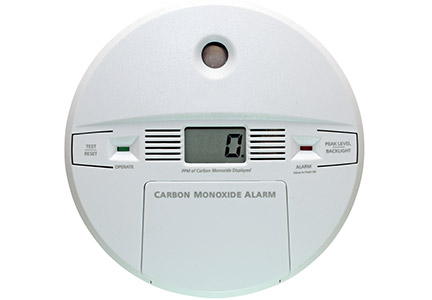Share
Related Topics
Tagged As
An estimated 2,850 people die and 15,900 people are injured annually because of fires in residences. Although more than 90 percent of homes have smoke alarms, millions of homes have alarms that do not work. Missing or dead batteries are the main cause for non-working smoke alarms - U.S. Consumer Product Safety Commission
We do not strictly control Google ad content. If you believe any Google ad is inappropriate, please email us directly here.

Question:
What is the best way to prevent smoke alarm and carbon monoxide alarm batteries from being pilfered for use in another device?
Background:
Carbon monoxide alarm and smoke alarm manufacturers offer battery compartment designs that are standard, "tamper-resistant", or "sealed".
"Tamper-resistant" battery compartments are typically secured by the installer with either a threadless plastic pin or a plastic tab provided by the alarm manufacturer. Both the pin and tab can be disabled with your finger, and the standard or lithium batteries easily removed.
"Sealed" battery compartments contain lithium batteries that are factory soldered and sealed within the base of the unit. The batteries are non-removable.
Recommendation:
A carbon monoxide and smoke alarm's lithium batteries should be "factory sealed" to prevent the home occupants or guests from robbing the batteries and rendering the alarm inoperable.
Question:
Both the CO and smoke alarms that we install have a battery compartment that is factory sealed. Should we also secure the alarm body to its mounting plate or the wall with a tamper-resistant screw?
Background:
If a tamper-resistant screw is used to secure the alarm to the mounting plate or wall, then the tenant must be given the security tool so that the alarm can be removed when it expires after five to ten years. If the tenant who has the tool relocates, or the tool is misplaced, then the agency or contractor would need to return to the jobsite at the appropriate time to remove the alarm for the current occupants.
More importantly, if the battery compartment is not factory sealed, and a single tamper-resistant screw is used to secure both the battery compartment and the alarm to the mounting plate or wall, then, with the security tool, the occupants would have the ability to pilfer the batteries and prematurely disable the alarm.
Recommendation:
When the battery compartment is factory sealed, the occupants are prevented from removing the alarm's lithium batteries for use in other devices. To avoid returning to the jobsite to uninstall the CO or smoke alarm when it expires, the alarm itself should be secured to the mounting plate or wall with standard screws.
HHI Error Correction Policy
HHI is committed to accuracy of content and correcting information that is incomplete or inaccurate. With our broad scope of coverage of healthful indoor environments, and desire to rapidly publish info to benefit the community, mistakes are inevitable. HHI has established an error correction policy to welcome corrections or enhancements to our information. Please help us improve the quality of our content by contacting allen@healthyhouseinstitute.com with corrections or suggestions for improvement. Each contact will receive a respectful reply.
The Healthy House Institute (HHI), a for-profit educational LLC, provides the information on HealthyHouseInstitute.com as a free service to the public. The intent is to disseminate accurate, verified and science-based information on creating healthy home environments.
While an effort is made to ensure the quality of the content and credibility of sources listed on this site, HHI provides no warranty - expressed or implied - and assumes no legal liability for the accuracy, completeness, or usefulness of any information, product or process disclosed on or in conjunction with the site. The views and opinions of the authors or originators expressed herein do not necessarily state or reflect those of HHI: its principals, executives, Board members, advisors or affiliates.








